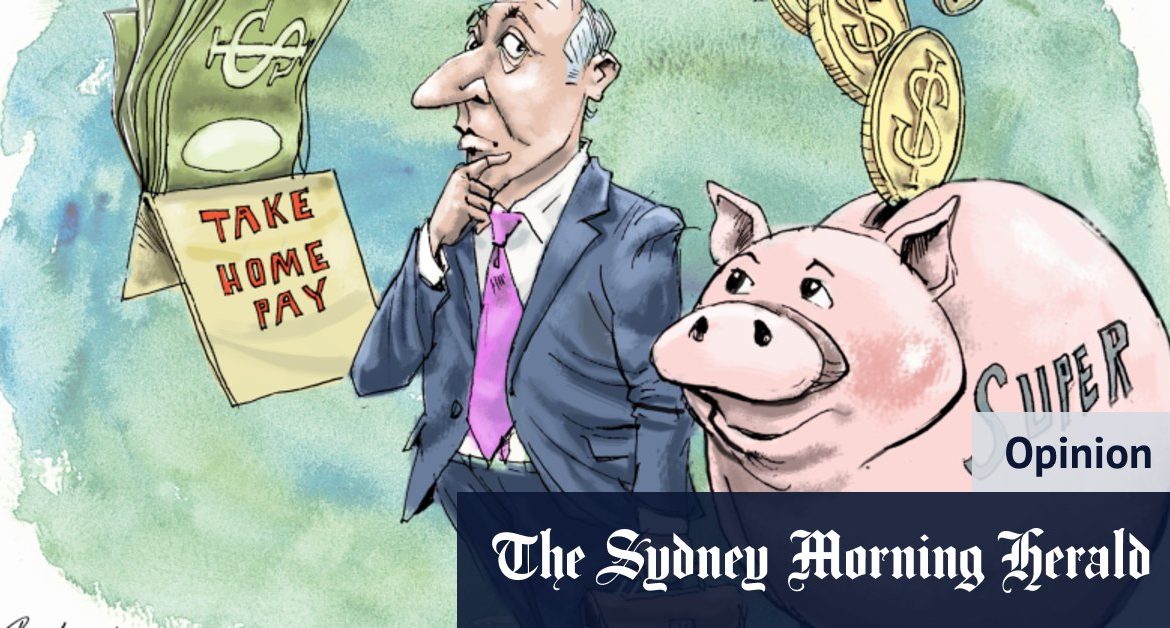Undoubtedly, letting people choose to have their cash upfront rather than keep it in super has the potential to be popular. When the federal government introduced the superannuation early access scheme at the height of the pandemic millions withdrew up to $20,000 each from their accounts to make ends meet or put aside for a rainy day.
Yet there are serious implications to shifting the compulsory system in this way. People are so notorious for focusing on the present – and not thinking about the long-term future – that in economics and psychology it’s known as “temporal discounting”. We see $1 in our hand today as worth more than $1 later (even when assuming no inflation). Of course, everyone is different but on the whole people are much more focused on getting by each day than their ability to afford a far-off retirement.
The architect of the nation’s superannuation system, former prime minister Paul Keating, is adamant 12 per cent is the correct rate
It is for this reason that compulsory superannuation was introduced in the first place. On this point there is very little disagreement. Treasury’s Retirement Income Review, released late last year, makes it clear that “many people would not save enough voluntarily for their retirement on their own”.
Forcing people to put money aside for retirement is also one of the reasons tax is charged at a lower rate on super, at 15 per cent, than on typical wages. It is an acknowledgement that earners are making a sacrifice now to secure their future. Presumably turning a portion of your super into take-home pay would mean handing back these tax savings to the government.
The unions and Labor have already targeted this as a concern and used it to claim it would be a “sneaky” tax grab from the government. The implications of making this choice would have to be laid out very clearly, including the tax implications and likely effect on future retirement balances.
But the bigger political problem from this proposal is more likely to show up much further down the track. If the government allows superannuation payments above 9.5 per cent to be optional it is a tacit recognition the current rate (or potentially 10 per cent if the rate goes up in July) is enough for retirement. While the proposal is in its early stages it is a huge threat to those who believe superannuation needs to reach 12 per cent to be adequate. This includes Labor, the unions and the super funds who have fought tooth and nail against any suggestion the legislated rises should be put on hold or tampered with.
Loading
It would make it harder than ever for future increases to the compulsory rate to be made law. Asking employers to tip in more than 12 per cent would be resisted by business lobby groups who say it’s difficult enough for many of them to contemplate affording the current rises. At the same time, winding back the opt-in component would then require employees relying on the funds as part of their income to accept a reduction in the money available to them. It could risk opening up Labor to criticism it is trying to force the nation’s workers to take a pay cut.
For now, the superannuation debate has turned full circle back to the question of how much is really necessary in order to retire comfortably. The architect of the nation’s superannuation system, former prime minister Paul Keating, is adamant 12 per cent is the correct rate for this purpose.
On the other hand, the retirement income review released at the end of 2020 says 9.5 per cent may be appropriate if retirees are willing to use their existing assets more. This could include reverse mortgage-style schemes and drawing down on capital, both of which have been avoided by the majority of retirees. These decisions have knock-on effects, such as reducing the amount of wealth left as inheritance for children and other beneficiaries.
Ultimately, the choice may end up being yours. But so will the consequences.
Jennifer Duke is an economics correspondent for The Sydney Morning Herald and The Age, based at Parliament House in Canberra.
Most Viewed in Politics
Loading







